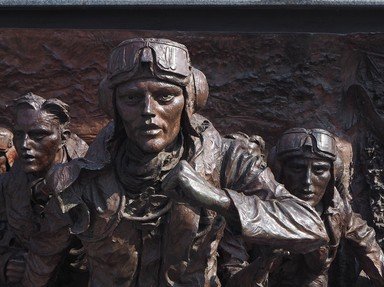Quiz Answer Key and Fun Facts
1. Who named the air war between the Luftwaffe and the RAF, "The Battle of Britain"?
2. Which fighter plane shot down the most enemy planes in the Battle of Britain?
3. How many fighter aircraft did the Royal Air Force have at its disposal at the beginning of the Battle of Britain (July 1940)?
4. Why did Luftwaffe bombing have a temporarily disastrous effect on the British Fighter Command's strength?
5. On August 24th, 1940, some German aircraft dropped high-explosive bombs on civilian suburbs of London, causing a loss of life. Churchill ordered an immediate retaliatory raid on Berlin. Hitler then:
6. What was the Luftwaffe's main fighter plane during the battle of Britain?
7. Which infamous Luftwaffe dive-bomber was stopped from taking further part in the Battle of Britain after a few months?
8. Which Battle of Britain fighter ace had prosthetic legs?
9. "We did not recognise this means of rescuing enemy pilots so they could come and bomb our civil population again. . . All German air ambulances were forced down or shot down by our fighters on definite orders approved by the War Cabinet." - Winston Churchill. What was the name of the German Air Ambulances Churchill was referring to?
10. After the Battle of Britain and the Blitz ended, the RAF (and later the USAAF) had unquestionable aerial superiority and the attacks on British cities stopped (with the exception of the retaliatory Baedeker Blitz of 1942 and Baby Blitz of 1943). Why then, over second-half of 1944, with the Allies on the offensive in France (and later in Belgium and the Netherlands) did 9,000 civilians die in London and other major British cities from aerial attacks?
Source: Author
Fergocricket93
This quiz was reviewed by FunTrivia editor
bloomsby before going online.
Any errors found in FunTrivia content are routinely corrected through our feedback system.

